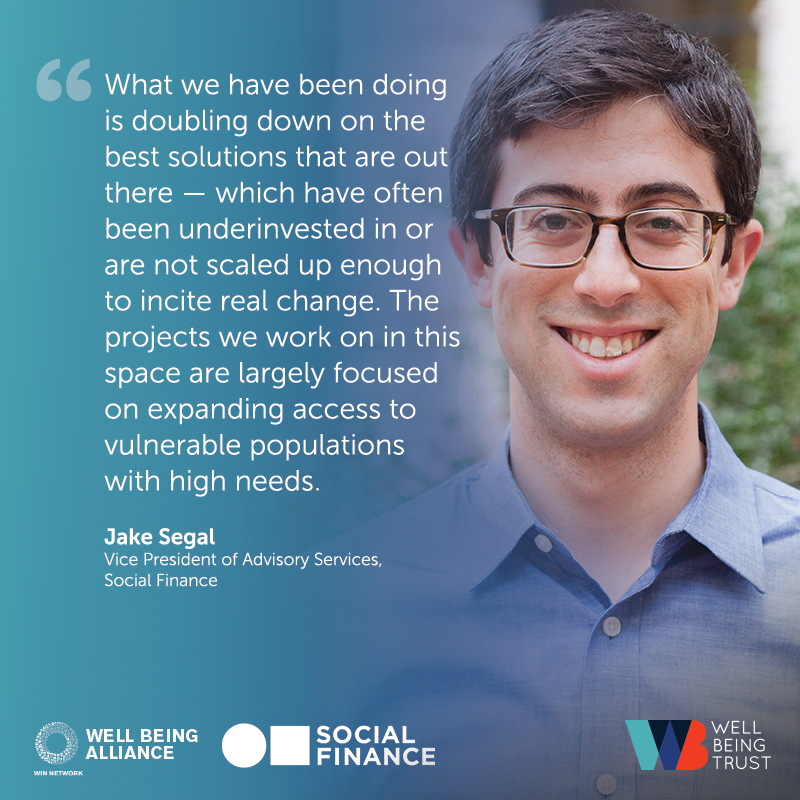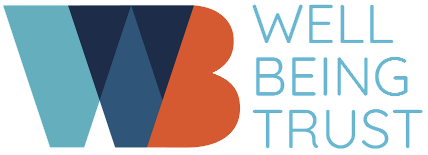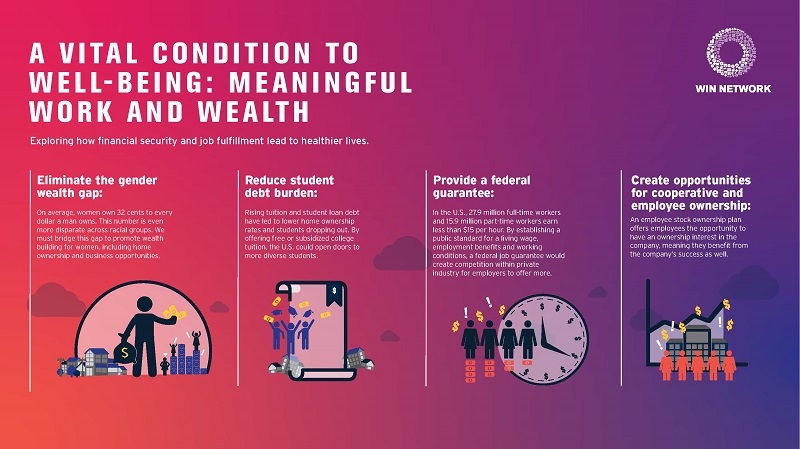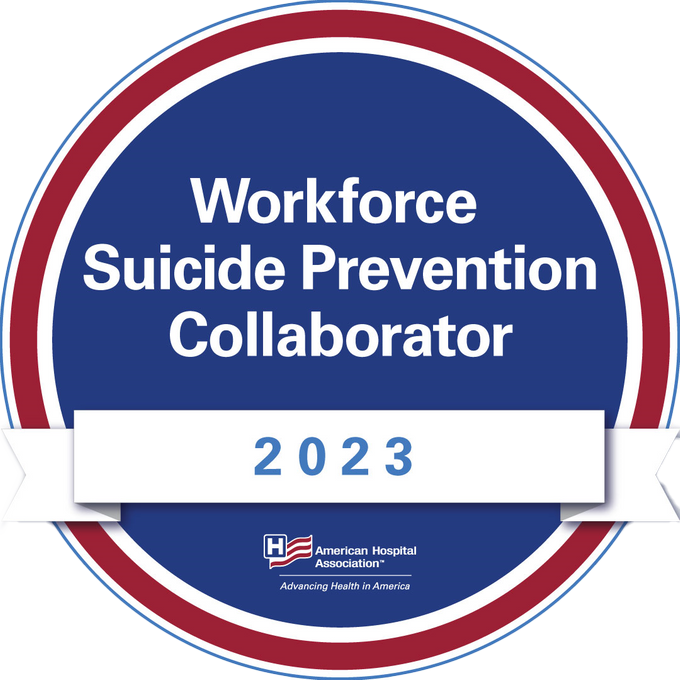Financing solutions to improve health for all
A Q&A with Jake Segal of Social Finance about the role of his organization’s ‘pay for success’ model in bringing well-being to the nation
By Tyler Norris
Implementing new initiatives in the social sector is no easy feat. It takes a lot of planning, coordination and funding. For example, ending chronic homelessness requires solutions that involve the criminal justice, housing and health care systems — all of which have 
The unfortunate result is that the best efforts to improve health and well-being often do not get enough investment, leaving the most vulnerable people without support. We need better funding systems. One financing model I’m excited about is “pay for success” — shifting the financial risk of funding social initiatives to private investors — which enables nonprofit agencies and governments to ensure better outcomes with the backing of investors with a mission.
Social Finance is a leading proponent of pay for success. Working alongside nonprofits, investors, and various levels of government, this national organization invests in prevention strategies that will lead to better health outcomes and drive long-term social progress. Social Finance is also a member of the Well Being Alliance, a network of organizations and communities brought together by the Well Being Trust to advance health and well-being in the nation.
I talked to Jake Segal, vice president of advisory services at Social Finance, about being part of the Alliance, Social Finance’s priorities and the obstacles they face, and how they ensure investments have a real impact.
Norris: Why did Social Finance join the Well Being Alliance? What do you see in the Well Being Alliance that supports the agenda of Social Finance?
Segal: For us, joining the Well Being Alliance was a no-brainer. There were two things about the Alliance that drew us in. The first is you, Tyler. We know that if you’re going to throw your shoulder into something, it’s going to be a worthwhile cause and we will want to be part of it. The second is the chance to be part of a collection of folks who have jumped in with us to drive change. This is an exceptional group of thinkers and doers from across the country focused on some of the more important and underrated issues of the day.
At Social Finance, we are looking for ways to fund prevention efforts that will improve social determinants of health for all. We do this by finding areas of well-being that have been overlooked and underinvested in. It’s no surprise to this group — though it may surprise people outside the Well Being Alliance — that our nation has hugely underinvested in behavioral health and undervalued its importance. When I step back and think about the outcomes Social Finance is asked to focus on by states and counties around the country, the vast majority of them have a behavioral health focus. So, joining a group with these priorities in mind makes perfect sense for us.
Norris: What are some examples of Social Finance’s work in that mental and behavioral health space?
Segal: What we have been doing is doubling down on the best solutions that are out there — which have often been underinvested in or are not scaled up enough to incite real change — and we build them out. The projects we work on in this space are largely focused on expanding access to vulnerable populations with high needs.
We have a project in Massachusetts and New York focused on employment assistance for veterans with service-related PTSD. Then there’s a project in Connecticut that is focused on substance-use treatment counseling for families on the edge of the child welfare system. We have another project in Ventura County, in Southern California, focused on trauma-informed cognitive behavioral therapy for formerly incarcerated folks on probation. We’re working on a pair of supportive housing programs in Austin Texas and Anchorage Alaska. Behavioral health needs are largely undervalued in our society, but if you actually find good practices and implement them widely enough, it will lead to positive outcomes.
Norris: What do you see as the biggest obstacles to Social Finance’s mission and how can the Alliance help work past them?
Segal: There are four big-picture challenges that we’re facing in trying to build a more outcomes-based sector.
The first is uncertainty from leaders who are not convinced that investing in social practices and programs will pay off. That uncertainty seems hard to believe from practitioners, but the truth is, policymakers are constantly asked for funding—often told that programs are “proven” and have incredible returns on investment—and they’re often disappointed. The hard reality is that positive, measurable social change is incredibly hard to achieve, especially in the lives of the most vulnerable.
The second is a lack of accountability, for a lack of a better term. We don’t evaluate enough, don’t evaluate carefully enough, don’t set clear and measurable goals in advance of program delivery. So it’s easy to overstate how effective initiatives are and to underinvest in what’s really working best.
The third is reactivity. Political systems focus on resolving emergencies, rather than preventing them. It’s easier to do that most of the time than it is to really double down on the things that are working.
And the fourth challenge is what we think of as “wrong pockets problems.” Social issues often impact more than one agency or jurisdiction, but the lack of cross-agency funding available creates financial burdens for one group to bear for everyone.
The Alliance can help to counteract these challenges in many ways. I think all of us can put our shoulder into talking about the social sector in a way that’s more realistic and actually helps to build credibility about which interventions and policies are working — and which ones aren’t.
Norris: The bridging of public health with financial instruments is really exciting. How does Social Finance move investments beyond their roles as financing vehicles to ensure they have a real impact on health and well-being?
Segal: Buying outcomes allows us to spend taxpayers’ money only on programs and practices that are successful. At the same time, we can tip-toe away from a compliance mindset — that is, “this is what you will do, and now you prove to us that you have done that” — which has driven so much of public sector spending. Rather, we are supporting the initiatives that service providers, who actually know their clients best, know how to be effective.
By focusing on the long-term outcomes of policies — often, the ones that are quite challenging to achieve and on policymakers’ list of priorities — we are compelling them to confront things in a way they have not had to before. These are uncomfortable conversations to have because we have to be explicit about how much we value different sorts of outcomes. We also have to be careful about how we determine whether or not something has worked right, and how we can take into consideration various factors of the economy, as well as things like motivational bias or enrollment bias.
Norris: Given the work your organization is doing, what does well-being in the nation mean to you?
Segal: It’s about bringing together stakeholders from different sectors to improve health outcomes across communities. Well-being in the nation is the mission behind a synergistic network aimed at helping the people who have the least power and the most need.







